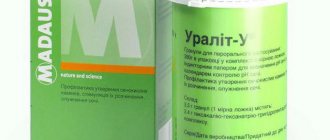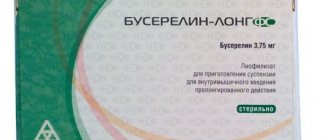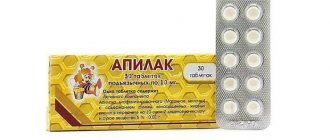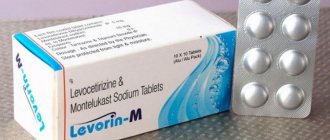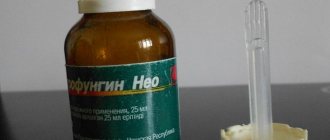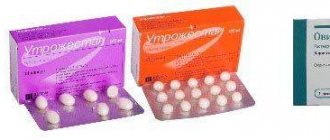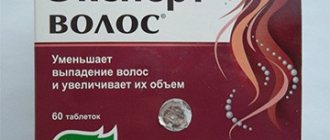Description
This is a remedy that normalizes metabolic processes in the brain. After taking it, thinking productivity improves and memory strengthens. The drug has a beneficial effect on the restoration of movements and speech abilities after changes in cerebral blood circulation.
It is characterized by a very mild hypotensive effect, as blood pressure decreases slightly. It has a slight anticonvulsant and antihypoxic effect. In diabetics, glucose levels decrease. Has a mild psychostimulating effect.
It is not an antibiotic, but it is possible to take two groups of drugs together. The drug is taken before meals. Treatment can last up to four months. Available in pharmacies only with a doctor's prescription.
Gammalon can be used during menstruation, and many doctors even recommend using the drug during menstruation. It is also not prohibited for HIV-infected patients to use it. In this case, dose adjustment may be necessary.
It is not recommended to drink alcohol during therapy. You should also not drive a vehicle, as psychomotor function may be affected.
Instructions for use of Gammalon
The drug was developed in Japan. Its original purpose is the rehabilitation of patients after a stroke. The medicine Gammalon is effective for people who need regular brain nourishment. The assessment of specialists and patients who completed the course of therapy is positive. They claim that the drug does not act immediately, but after long-term use the result is clearly visible.
Composition and release form
Gammalon tablets are manufactured by the Japanese company Daiichi Pharmaceutical Co. ATX code: N03AG03. Characteristics of the drug Gammalon:
| Compound | 1 tablet contains 250 mg of gamma-aminobutyric acid |
| Release form of the drug | The box contains 10 blisters of 10 tablets each (100 tablets in total) |
Pharmacodynamics and pharmacokinetics
The drug provides a nootropic effect: γ-aminobutyric acid restores metabolism, improves blood supply and microcirculation of the brain, normalizes the process of utilization of toxic metabolic products and glucose, and reduces glycemia levels. GABA is one of the main neurotransmitters that control central inhibition. The substance improves the dynamics of nervous processes.
The maximum concentration of the active substance in plasma is observed 60 minutes after administration. After 24 hours it is not detectable in the blood and does not penetrate the blood-brain barrier well. Pharmacodynamics of Gammalon:
- improves memory;
- makes thinking more productive;
- provides a mild psychostimulating, antioxidant effect;
- helps restore motor activity and speech after cerebral circulatory disorders;
- has moderate anticonvulsant, neurotrophic, antidepressant effects;
- eliminates dizziness;
- puts your sleep in order;
- provides a hypotensive effect - reduces high blood pressure.
Indications for use
The drug Gammalon is taken for various diagnoses and conditions:
- consequences of circulatory disorders in the brain;
- atherosclerosis of the cerebral arteries with impaired attention and memory;
- arterial hypertension of different etymologies (primary, secondary), which leads to headaches, dizziness, insomnia;
- alcoholic encephalopathy, polyneuritis, alcohol dependence;
- consequences of traumatic brain injuries, cerebrovascular diseases;
- depression, provoking astheno-hypochondriacal conditions, behavioral disorders;
- diabetes;
- sea, air sickness.
In pediatric practice, the drug is used for cerebral palsy, birth injuries, and mental retardation. Gammalon is given to children after traumatic brain injuries or for cerebrovascular accidents. As an auxiliary drug, it is prescribed for Down syndrome, hydrocephalus, delayed speech development, hypertonicity, etc.
Benefits and harm to the body
Patients leave only positive reviews of Gammalon, since after its use, brain function improves. The product stimulates blood circulation in the brain and improves microcirculation. After taking it, memory is strengthened and concentration is improved. Resistance to oxygen starvation increases significantly.
Harm to the body is caused in case of uncontrolled use of the drug and exceeding the specified dosage. You should not self-medicate.
Directions for use and dosage
The tablets are taken orally, before meals. Gammalon is swallowed whole, not chewed, and washed down with a sufficient amount of water. Dosage for adults – 3–3.75 g per day (12–15 tablets). The daily dose is divided into three doses. The course of treatment with the drug ranges from 2 weeks to 4 months. The break lasts 6–8 months, then, if necessary, therapy can be repeated. With a weak vestibular system (motion sickness syndrome), adults take 0.5 g of gamma-aminobutyric acid three times a day. The course lasts 3–4 days.
Gammalon is given to children in other dosages:
- age 1–3 years – 1–2 g (4–8 tablets);
- children 4–6 years old – 2–3 g (8–12 tablets);
- children over 7 years old – 3 g (12 tablets).
- dosage for motion sickness – 0.25 g three times a day.
While taking Gammalon, you should not drink alcoholic beverages. In the first days of therapy, the patient should not drive a car or engage in activities that require increased attention and memory, high speed of motor/mental reactions. You should not take pills just before bedtime, as they can lead to sleep disturbances.
- What foods lower blood pressure in humans? List of products and menus for arterial hypertension
- Clothes storage - proper organization of space in a closet or room
- Abdominoplasty
Analogues of Gammalon
The drug has more than ten effective analogues:
- Aminalon is a drug identical to Gammalon. Produced in Belarus at the Borisov Medical Preparations Plant, in Russia at the Akrikhin KhFK, Belgorodvitamins, etc. plants.
- GABA is an American dietary supplement from NOW Foods. Release form: gelatin capsules, 100 pcs. Tablet composition: 500 mg GABA, 2 mg vitamin B6, rice flour, gelatin, magnesium stearate and silica.
- Gamibetal is a Bosnian analogue of Gammalon from the manufacturer Sbrolek. Available as a solution for intravenous administration 24 mg/ml, tablets 250 mg.
- Ganevrin (Apogamma, Encephalon, Gaballon, Gamarex, Gammaneuron, Gammar, Gammazol) - according to the instructions, absolute analogues of Aminalon are not sold in the Russian Federation.
Gammalon price
The drug based on gamma-aminobutyric acid can be purchased offline, online pharmacies, and on specialized websites. Cost of Gammalon and available analogues in Moscow:
| Drug name | Price |
| Gammalon | 2100–2800 |
| Aminalon | 170–200 |
| GABA | 1200–1500 |
Prices for the drug and its analogues
The cost of the medicine is not very high; there are analogues both cheaper and more expensive. Prices for the drug and its substitutes are presented in the table. Prices may vary depending on the manufacturer, dosage of the medicine and package size.
| Name of the product | Dosage of the active component in 1 tablet/capsule (mg) | average price |
| Aminalon | 250 | 240 |
| Gammalon | 250 | 2300 |
| Picamilon | 10, 20, 50 | 120 |
| Gammalate B6 | 75 | 320 |
| Olatropil | 250 piracetam, 125 aminobutyric acid | 160 |
| Somazina | 100 | 2500 |
| Lyra | 522,5 | 330 |
| Dendrix | 250 | 670 |
| Neurodar | 500, 1000 | 950 |
| Glycine | 100 | 76 |
| Pantocalcin | 250 | 713 |
| Cortexin | 10 | 1100 |
special instructions
At the beginning of treatment, blood pressure monitoring is necessary due to the possibility of its fluctuation.
While using Gammalon, it is prohibited to drink alcohol-containing drinks.
It is not recommended to take the drug immediately before bedtime, because Possible sleep disturbances (including insomnia).
In the first days of treatment, doctors advise refraining from driving a car or performing potentially dangerous activities that require increased attention, high speed of motor and/or mental reactions. In the future, with long-term use of this medicine, caution should be exercised.
Mutual potentiation of the effect is observed with the simultaneous use of Gammalon with benzodiazepine drugs (anticonvulsants and tranquilizers), most sleeping pills and sedatives.
The effect of gamma-aminobutyric acid may be enhanced by pyridoxine hydrochloride (vitamin B6).
The use of any other drug should be discussed with your doctor.
Comparison of addiction between Aminalon and Gammalon
Like safety, addiction also involves many factors that must be considered when evaluating a drug.
So, the totality of the values of such parameters as “o syndrome” in Aminalon is quite similar to the similar values in Gammalon. Withdrawal syndrome is a pathological condition that occurs after the cessation of intake of addictive or dependent substances into the body. And resistance is understood as initial immunity to a drug; in this it differs from addiction, when immunity to a drug develops over a certain period of time. The presence of resistance can only be stated if an attempt has been made to increase the dose of the drug to the maximum possible. At the same time, Aminalon has a fairly small value of the “syndrome”, however, the same as Gammalon.
Substitutes for their effect on the body
Pharmacies offer a large selection of Aminalon analog drugs that have a similar effect on the body, but are developed on the basis of other components.
Somazina
The medication belongs to the pharmacological group of psychostimulants and nootropics and is developed on the basis of citicoline in the form of sodium salt. The drug normalizes the conduction of nerve impulses, reabsorbs brain edema, helps preserve neural energy reserves, and eliminates the symptoms of amnesia. Somazina is available in the form of tablets, which are available with a doctor's prescription in pharmacies.
The medicine is indicated in the following cases:
- Stroke.
- Hemodynamic disorders and consequences of this disease.
- Traumatic brain injury and its consequences.
- Disorders of consciousness and behavior caused by brain disorders.
The dosage recommended for adults and elderly people is from 500 to 2000 mg per day. It is advisable to divide the last dose into a maximum of four doses. The dose may vary depending on the severity of the disease, the overall clinical picture and the individual recommendations of the doctor. Pediatric practice limits the use of this medication.
The drug is not used in cases of individual intolerance, high tone of the parasympathetic nervous system and the use of drugs that contain meclofenoxate. The drug is prescribed to pregnant and breastfeeding women only if the benefit to the mother is higher than the risk to the child. In this case, consulting a doctor and agreeing on the dosage is mandatory. During the period of treatment, it is recommended to avoid activities associated with increased danger and requiring increased concentration.
Adverse reactions from use may include:
- severe headaches;
- hallucinations;
- tachycardia;
- arterial hypertension;
- dyspnea;
- chills;
- nausea and vomiting;
- an allergic reaction in the form of a rash on the skin.
If the above-described undesirable effects increase, Somazina should be limited or stopped completely.
Lyra
Lyra, based on citicoline monosodium salt, is a medicine that has a neurometabolic effect. The drug is characterized by a wide spectrum of action. It restores damaged cell membranes, prevents their death and reduces the area of brain damage. Lyra helps improve memory and can help cope with lack of initiative and depression that arises in the course of everyday life. In most cases, the drug guarantees a long-lasting positive effect on the body after completion of the treatment cycle.
The medicine is prescribed to patients for:
- Ischemic stroke and the recovery period after it.
- Traumatic brain injuries.
- Disorders of attention, consciousness and behavior.
The recommended dosage of the drug in question is the same as the dose of Somazina. Its correction should be agreed upon in consultation with a doctor. Lyra is not used to treat children. The medication is also contraindicated during pregnancy and is not prescribed during lactation. Exceptions are cases in which the benefit to the mother is greater than the harm to the child.
Therapy with Lyra is excluded if the patient has sensitivity to individual components of the drug and high tone of the parasympathetic nervous system. It is not recommended to combine medication with meclofenoxate.
Lyra can cause a number of side effects:
- headache;
- anaphylactic shock;
- nausea;
- diarrhea;
- shortness of breath.
Dendrix
Dendrix belongs to a group of psychostimulants that are used to relieve attention deficit disorder and hyperactivity. The active ingredient is citicoline. Direct indications for prescribing the medication are:
- Brain stroke.
- Head injuries.
- Neurological and sensitive disorders.
- Cerebral circulation problems.
The dose should be prescribed and adjusted by the doctor as treatment progresses. It is recommended to take up to 2000 mg per day. The number of doses and tablets used depends on their dosage. Tablets of 500 mg should be taken 4 times a day, and 1000 mg - 2 times. The drug has low toxicity, so cases of overdose have not been described.
Contraindications to the use of Dendrix are:
- pregnancy and lactation;
- allergy to the drug;
- childhood.
Possible undesirable effects include tachycardia, sweating, increased body temperature, itchy skin, chills, shortness of breath and disturbances in the digestive system.
Neurodar
Neurodar tablets are actively used for stroke, traumatic brain injury and cognitive impairment. The drug preserves the energy supply of neurons, acts as a preventive measure for cerebral ischemia, and also reduces the manifestations of amnesia.
Indications for use coincide with the above indications for taking Dendrix. However, speaking about the features of using Neurodar, it is important to consider the following points:
- The medication is prescribed during pregnancy only in case of urgent need.
- The drug is not prescribed to people who are known to be lactose intolerant.
- Attention may deteriorate during the course of treatment, so you should refrain from engaging in dangerous activities.
- The medicine is not used to treat children.
It is advisable to divide the use of Neurodar into 4 doses per day, for each of which you need to take 500 mg. The dose and duration of the cycle are prescribed and adjusted by the doctor. Before prescribing the drug, the doctor must be informed about the drugs already taken to be sure of their compatibility. Side effects from using this medication include:
- nausea;
- dizziness;
- shiver;
- dysfunction of the gastrointestinal tract;
- allergies;
- chills and elevated body temperature.
Glycine
The medication is a non-essential amino acid and is used to regulate metabolism, has a sedative effect and acts as an antidepressant. Glycine can increase performance and resistance to intellectual and physical stress. The drug is indicated for use in the following cases:
- Reduced activity.
- Increased excitability and emotional instability.
- Ischemic stroke.
- Head injuries.
- Organic diseases of the nervous system.
Glycine is used to treat both adults and children over 3 years of age. The recommended daily amount of the drug for both age groups is 300 mg, that is, one tablet three times a day. Treatment should be continued for 14 days. If Glycine is used to normalize sleep, the medicine should be taken in the evening at a dose of 50-100 mg. The use of the drug in the case of ischemic stroke involves using a dose of 1000 mg. The repeated course can be repeated on average 5 times a year.
Glycine should not be used in the following situations:
- intolerance to this medication;
- arterial hypotension;
- treatment with sleeping pills and tranquilizers.
The list of undesirable effects of Glycine is insignificant and includes allergies, weakness, throat irritation and rhinitis.
Pantocalcin
This medicine based on calcium hopantenate is often used in the complex treatment of cognitive impairment and brain damage due to trauma. Pantocalcin is also indicated for diseases and disorders such as:
- Parkinson's disease.
- Emotional stress, frequent stressful situations.
- Mental retardation.
- Neurosis-like conditions and stuttering caused by them.
- Cerebral palsy in children.
- Urinary disorders.
- Developmental delay.
The medication is used 20 minutes after meals. The dosage for patients from 3 to 12 years old should not be higher than 0.25-0.5 mg, and for adults - up to 1 g (single dose of the drug). The maximum daily dosage for adults is 3 mg, and for children – 0.75-3 mg. The drug is best used in the morning and afternoon. The duration of therapy ranges from 1 to 4 months; in some cases, treatment can last six months. A repeated course of treatment, reduction and increase in doses taken should be agreed with the doctor.
Pantocalcin may cause adverse reactions, which include:
- sleep disorders;
- noise in the head;
- drowsiness;
- allergies.
Cortexin
Cortexin, based on livestock brain polypeptides, optimizes the balance of metabolism of excitatory and inhibitory acids, reduces convulsive brain activity, improves memory and promotes rapid physical and intellectual activity. The medication is indicated for low learning ability, delayed speech development, cerebral palsy and epilepsy. It is acceptable to use the product both in adulthood and in childhood. Use during pregnancy is strictly contraindicated.
Cortexin is produced in the form of an injection solution, and has the following recommended dosages:
- 10 mg for adults and children weighing more than 20 kg;
- 0.5/kg body weight for children weighing less than 20 kg.
In both cases, treatment lasts up to 10 days. A repeat course can be carried out after at least 3 months. The drug is not compatible with novocaine, and when introducing other drugs into the body, in addition to this one, it is necessary to use separate syringes. The medicine can only be purchased with a doctor's prescription.
Side effects and overdose
The drug may cause anxiety, sleep disturbances, a feeling of heat, fever, shortness of breath, and changes in blood pressure. Digestive tract disorders are observed: nausea, vomiting, dyspepsia. Children often experience overexcitement in the first days of taking it, which is why the recommended doses have to be reduced. In case of overdose, adverse reactions intensify. Treatment is symptomatic: gastric lavage, taking sorbents, reviewing the dosage of Gammalon.
Contraindications
The drug is prohibited for use in the following diseases and conditions:
- intolerance to the active substance;
- acute renal failure;
- pregnancy;
- age up to 3 years (for newborns and infants, a specialist prescribes the drug, assessing the ratio of potential harm and benefit).
Drug interactions
Gammalon should not be taken simultaneously with medications that regulate the functioning of the nervous system and brain. Taking them together enhances their effect and leads to the risk of complications. These drugs include anticonvulsants, sedatives, and tranquilizers.
The use of vitamin B6 is also prohibited. If you are taking any of the listed medications, you must notify your doctor. Which drug needs to be replaced with an analogue is determined by a specialist.
Indications for use
Gammalon tablets are prescribed for pathologies:
- impaired blood supply to brain tissue, including head injury, stroke;
- severe alcohol poisoning and alcohol dependence;
- mental retardation, mental retardation, lack of speech development;
- severe headaches, dizziness;
- frequent or prolonged depression;
- seasickness syndrome;
- decreased attention and memory loss;
- cerebral palsy;
- impaired transmission of nerve impulses;
- birth injury;
- presence of diabetes;
- regular increases in intracranial pressure;
- impaired sensitivity and performance of the limbs;
- lack of normal sleep.
Gammalon for children is used if the child has a sleep disorder.
For prevention, tablets can only be taken as prescribed by a pediatrician/therapist.
https://youtu.be/qWcsTokoVmo
